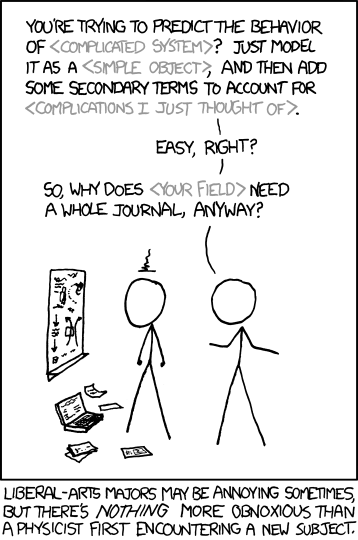I’m pretty excited for tomorrow: I’ll begin teaching the Fall 2015 offering of 36-721, Statistical Graphics and Visualization. This is a half-semester course designed primarily for students in our MSP program (Masters in Statistical Practice).
A large part of the focus will be on useful principles and frameworks: human visual perception, the Grammar of Graphics, graphic design and interaction design, and more current dataviz research. As for tools, besides base R and ggplot2, I’ll introduce a bit of Tableau, D3.js, and Inkscape/Illustrator. For assessments, I’m trying a variant of “specs grading”, with a heavy use of rubrics, hoping to make my expectations clear and my TA’s grading easier.

My initial course materials are up on my department webpage.
Here are the
(I’ll probably just use Blackboard during the semester, but I may post the final materials here again.)
It’s been a pleasant challenge to plan a course that can satisfy statisticians (slice and dice data quickly to support detailed analyses! examine residuals and other model diagnostics! work with data formats from rectangular CSVs through shapefiles to social networks!) … while also passing on lessons from the data journalism and design communities (take design and the user experience seriously! use layout, typography, and interaction sensibly!). I’m also trying to put into practice all the advice from teaching seminars I’ve taken at CMU’s Eberly Center.
Also, in preparation, this summer I finally enjoyed reading more of the classic visualization books on my list.
- Cleveland’s The Elements of Graphing Data and Robbins’ Creating More Effective Graphs are chock full of advice on making clear graphics that harness human visual perception correctly.
- Ware’s Information Visualization adds to this the latest research findings and a ton of useful detail.
- Cleveland’s Visualizing Data and Cook & Swayne’s Interactive and Dynamic Graphics for Data Analysis are a treasure trove of practical data analysis advice. Cleveland’s many case studies show how graphics are a critical part of exploratory data analysis (EDA) and model-checking. In several cases, his analysis demonstrates that previously-published findings used an inappropriate model and reached poor conclusions due to what he calls rote data analysis (RDA). Cook & Swayne do similar work with more modern statistical methods, including the first time I’ve seen graphical diagnostics for many machine learning tools. There’s also a great section on visualizing missing data. The title is misleading: you don’t need R and GGobi to learn a lot from their book.
- Monmonier’s How to Lie with Maps refers to dated technology, but the concepts are great. It’s still useful to know just how maps are made, and how different projections work and why it matters. Much of cartographic work sounds analogous to statistical work: making simplifications in order to convey a point more clearly, worrying about data quality and provenance (different areas on the map might have been updated by different folks at different times), setting national standards that are imperfect but necessary… The section on “data maps” is critical for any statistician working with spatial data, and the chapter on bureaucratic mapping agencies will sound familiar to my Census Bureau colleagues.
I hope to post longer notes on each book sometime later.

 So, time was freed up by having less coursework, but it was reallocated largely towards diapering and sleep. Still, I did start on a new research project, about which I’m pretty excited.
So, time was freed up by having less coursework, but it was reallocated largely towards diapering and sleep. Still, I did start on a new research project, about which I’m pretty excited.